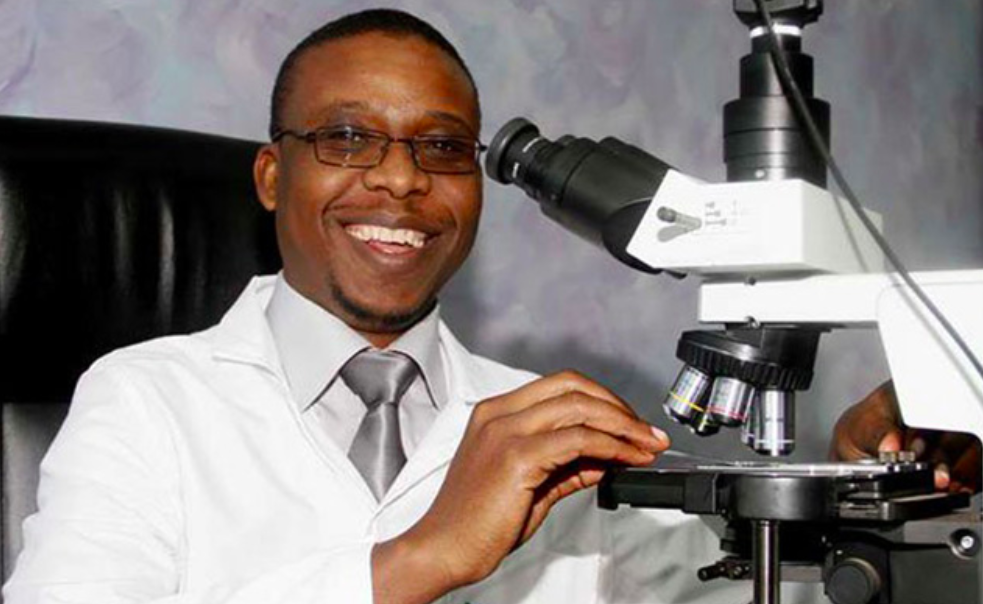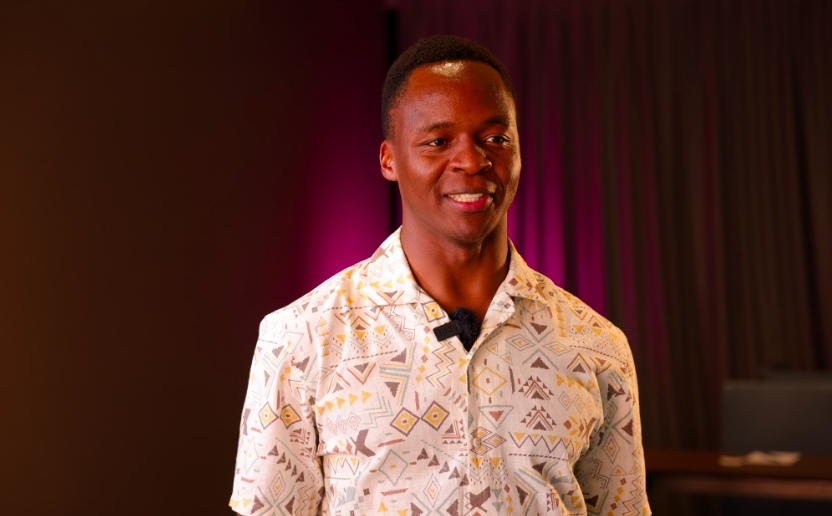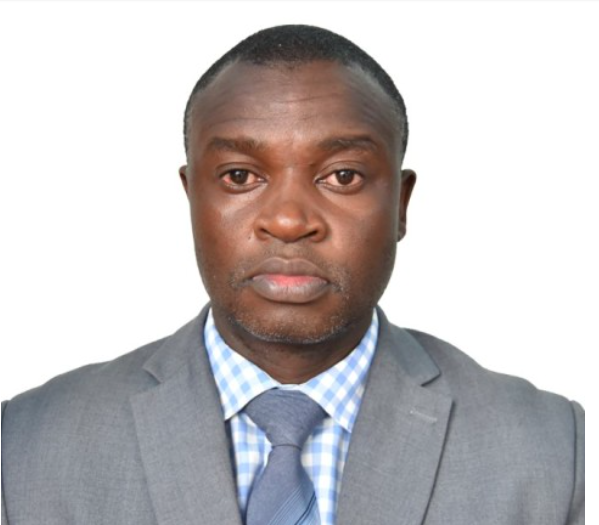 In Kenya, once
a person has been declared brain dead, you can’t sign a death certificate until they are off the life-support machine.
In Kenya, once
a person has been declared brain dead, you can’t sign a death certificate until they are off the life-support machine.Dead but alive. That was the status of Kenyan mask-vendor
Boniface Kariuki, whom doctors declared brain dead last week.
Kariuki spent nearly two weeks on a life-support machine, before his family was told by doctors that his heart was still beating but his brain had ceased to function.
"Mwangi is confirmed brain dead. We know what it means. We are just waiting for the doctor to tell us he is no more," family spokesperson Emily Wanjira said on Sunday.
The family later on Monday confirmed he was off the life support machine, hence dead.
"Boniface is no more. We have just viewed his body," Wanjira said on Monday.
So what is brain death, and does it mean a person is actually dead?
The definition of death in Kenya shifts dramatically depending on whether you ask a doctor, a lawyer, a religious leader or a community elder. And the controversy is not unique to Kenya. The idea of brain death is currently facing its greatest challenge since its conception in the 1960s.
This definition of death matters. It influences decisions around life support, grieving, court cases, and funerals among others.
Dr Ahmed Kalebi, the principal pathologist and CEO at Dr Kalebi Labs (DKL) explains that in all definitions, there a point of permanence, a cessation of life.
The question is, how do you define that permanent cessation of life?
There are two ways doctors decide if a patient is dead: One is when the heart and lungs stop working. The other is when the entire brain has stopped working (brain death).
But Dr Kalebi says brain is surest marker of life and death. “Stopping breathing is not death because someone can be put on a machine. The heart stopping is also not death because you can be put on mechanical heart lung machine,” says Dr Kalebi, who is also a board member of the Indipendent Medico-Legal Unit (Imlu).
“But brain function is irreversible and is usually the final marker of death. If someone’s heart and lungs have stopped but brain is active, they’re alive but if you’re brain dead but your body is functioning, you’re clinically dead.”
Brain dead patients do not hear or feel anything, including pain.
This is because the parts of the brain that feel, sense, and respond to the world no longer work. They cannot even breathe on their own.
 Dr Ahmed Kalebi, the principal pathologist and
CEO at Dr Kalebi
Labs (DKL).
Dr Ahmed Kalebi, the principal pathologist and
CEO at Dr Kalebi
Labs (DKL).According to the landmark paper Brain Death
Determination: The Imperative for Policy and Legal Initiatives in Sub Saharan
Africa, the concept is clear:
“The concept of brain death (BD), defined as irreversible loss of function of the brain including the brainstem, is accepted in the medical literature and in legislative policy worldwide.”
But how do you determine someone is brain dead? Two doctors will run a series of tests. They both have to agree on the results for a diagnosis of brain death to be confirmed. These tests are carried out twice to minimise any chance of error.
“You look at the pupils of the eyes, gut reflex, run an EEG (electroencephalogram) test to the electrical activity of the brain, and a breathing test to see if the patient makes any attempt to breathe on their own,” Dr Kalebi says.
The pupils can be tested simply by shining a torch into both eyes to see if the patient reacts to the light.
Gut reflext can be tested by inserting a thin, plastic tube down the patient’s trachea to see if they gag or cough, while for breathing, you disconnect the person from the ventilator briefly to see if they make any attempt to breathe on their own.
Once declared brain dead, patients have “100 per cent mortality”, they cannot recover even if their hearts keep beating on ventilators.
“But once a person has been declared brain dead, you can’t give a death certificate until heart and lung stop, so until the life-support machine stops,” Kalebi says.
Legal definitions of death vary worldwide. In the US, the Uniform Determination of Death Act (UDDA) defines death as: “Irreversible cessation of circulatory and respiratory functions, or irreversible cessation of all functions of the entire brain, including the brain stem … in accordance with accepted medical standards.”
But in Sub Saharan Africa, including Kenya, the picture is murkier. A person switching off the “life-support” for a brain dead person might be seen as taking away life.
The 2015 Global Public Health article highlights the problem: “However, in most of Sub Saharan Africa there are no legal guidelines regarding Brain Death. Barriers to the development of BD laws exist in countries such as Kenya. Cultural, ethnic, and religious diversity creates a complex perspective about death challenging the development of uniform guidelines for BD.”
Nairobi-based public health lawyer Fabian Oriri confirms that Kenya lacks a legal framework that defines or governs the state and consequences of brain death.
“In the absence of legal clarity, brain death in Kenya is
not legally considered actual death. A person diagnosed as brain dead is often
regarded, in legal and social terms, as still alive although in a state of
total incapacitation, unable to act or comprehend,” he says.
“As a result, this creates a legal and ethical dilemma, raising questions about whether a medically accepted determination can stand without legal recognition especially when it involves decisions about life and death.”
 Public health lawyer Fabian Oriri.
Public health lawyer Fabian Oriri.Without this legal backing, doctors hesitate to withdraw “life support”, even when brain death is
medically certain. This prolongs care that may be futile, burdens limited ICU
resources, and causes anguish for families.
Dr Kalebi says doctors follow guidelines given by the Kenya Medical Practitioners and Dentists Council (KMPDC).
“So the biggest issues becomes who switches off the machine, life support? In Kenya it has not been defined because we don’t practical cases. KMPDC says the doctors must consult the family, because of the patient dignity,” he says.
Oriri says in the absence of a clear statutory provision, a public interest petition may be filed before the High Court of Kenya “to seek judicial clarification on the legal recognition of brain death, the circumstances under which it applies, and its broader implications on the legal definition of death.”
Critics of brain death as actual death say some parts of the brain continue to function in brain dead people.
For instance, the hypothalamus, which helps manage very basic functions such as temperature, blood pressure and hormones.
They point to rare cases like Jahi McMath, a 13-year-old girl who was declared brain dead in 2013 in the US. Her family refused to withdraw life support for years. She continued to grow and even went through puberty. But she never recovered and eventually died.
"I've never heard of a corpse that underwent puberty before," Dr Alan Shewmon, a professor emeritus of pediatrics and neurology at the University of California, Los Angeles, said in an NPR broadcast in February last year.
There was also the case of Adriana Smith, a pregnant US woman who was declared brain dead in February this year but was kept on life support to continue her pregnancy. She gave birth via a caesarean section on June 13, and was afterwards taken off life-support.
Dr Stephen Asatsa is a thanatologist – an expert in the scientific study of death and the practices associated with it. He also studies indigenous knowledge systems in psychology.
 Dr Stephen Asatsa is well-regarded for his studies in thanatology (the scientific study of death and the practices associated with it), and indigenous knowledge systems in psychology.
Dr Stephen Asatsa is well-regarded for his studies in thanatology (the scientific study of death and the practices associated with it), and indigenous knowledge systems in psychology.He says culturally, life often extends beyond a medical
moment. “When you go cultural even physical death is not end, they say death
occurs when the spirit has left. So culturally, human life cannot be reduced to
biology.
“The heart was seen as the centre of human life. Religion also talks of heart. It was thought to be the seat of soul, spirit. With understanding of medicine, we know that brain is the centre of life,” he explains.
“If talking to a family of a brain dead patient, I would say the brain stopped working. So is he alive or dead? I would accept their view the heart is still there so there’s life, culturally. Until everything has stopped that’s when we can say death has occurred, to them,” he says.
He praises the medics at the Kenyatta National Hospital, because they did not switch off life-support machine for Boniface, even after declaring him brain dead.
“We cannot remove
culture, but at the same time we cannot dispute medical and legal definitions. There are
places where religion, medical and cultural psychology draw from the same
understanding, but other areas there are differences. We should always find the
areas of convergence.”










![Mobile [SIM] Subscriptions in Kenya](/_next/image?url=https%3A%2F%2Fcdn.radioafrica.digital%2Fimage%2F2025%2F07%2F4adb0c0f-625e-418c-904f-77f7a4e5bd35.jpeg&w=3840&q=100)
